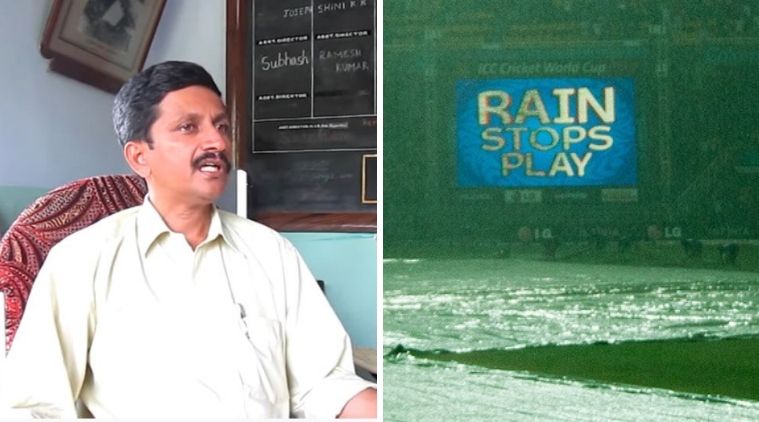
South Africa A beat India A by four runs via the VJD method on Thursday. What is the VJD method?
The VJD method is a method of calculating target scores in rain-truncated limited overs cricket matches, devised by a civil engineer from Kerala, V Jayadevan. It is a method that is an alternative to the DLS (Duckworth, Lewis and Sterne) method. The VJD method was previously used in the Indian Cricket League, is used in the Tamil Nadu Premier League (TNPL) , was considered for use in the fourth and fifth seasons of the IPL, and was once even considered as an alternative to the DLS method by the ICC.
In 2012, the ICC had thrown out Jayadevan’s proposed system, saying – “The committee unanimously agreed that there was no evidence of any significant flaws in the D/L method nor did the committee believe that any improvements could be offered by the VJD method.”
The engineer had protested then that he had not been given a fair hearing. The DL method stuck on, to be modified to be made into a Duckworth-Lewis-Stern method, with the VJD system not being allowed into the international arena. However, there are some definite advantages that the VJD system can be said to have over the more common DLS method.
Advantages of VJD method
The VJD system takes into account the statistics from previous games. The DLS method does not take into account the reputation of sides or their recent form.
The DLS method assumes that the scoring rate of teams continue to increase as the innings goes on, and fixes the target score accordingly. However, this is often found to be unjust as teams do not always increase their strike rate in direct proportion to the number of overs gone. As a result of this, there are often abrupt changes required in the projected score when the DLS system is followed.
The VJD system, to offer a more scientific alternative, divides the innings into phases. It assumes a high scoring rate in the first few overs, considering fielding restrictions, assumes a drop in the rate in the middle overs, and assumes another rise in the slog overs.

There are also different scoring patterns set for different scores. For scores below 100, the scoring approach is different than a score between 100 and 200, or between 200 and 300 and so on – consequently, different scoring patterns are used to find out the projected target.
READ | For IPL 2018, we use DLS but why not think about VJD method, questions Dinesh Karthik
Another advantage that the VJD method has over the DLS method in terms of having a more humane way of calculating targets is that it considers two curves on the graph as opposed to the single curve on the DLS graph on which all calculations are made.
The justification for this is that a normal curve will represent the team’s scoring rate before the onset of rains, when they play with the assumption that a full quota of overs is available. A different ‘target curve’ is required to approximate the changed approach after the truncation of overs, as teams play with a changed approach as the number of overs left to play go down.
How projected targets vary in the two systems (20 over match scores)
Team 1 Score – 150: DLS Target 93; VJD Target 91
Team 1 Score – 200: DLS Target 124; VJD Target 118
Team 1 Score – 250: DLS Target 154; VJD Target 142
Team 1 Score – 300: DLS Target 163; VJD Target 163
Team 1 Score – 350: DLS Target 174; VJD Target 182
READ | World Cup: When bizarre rain rule resulted in South Africa needing 21 runs off one ball vs England